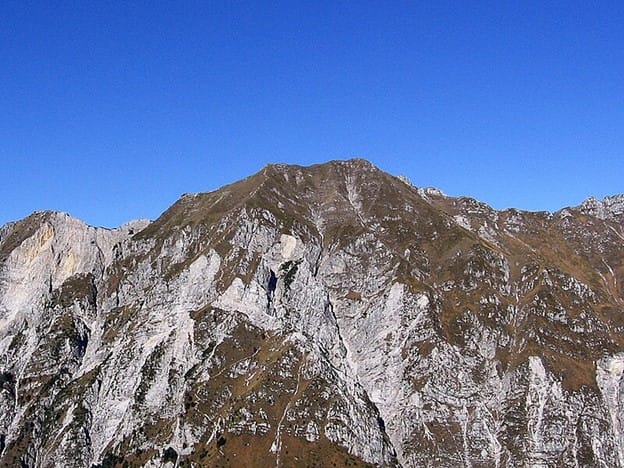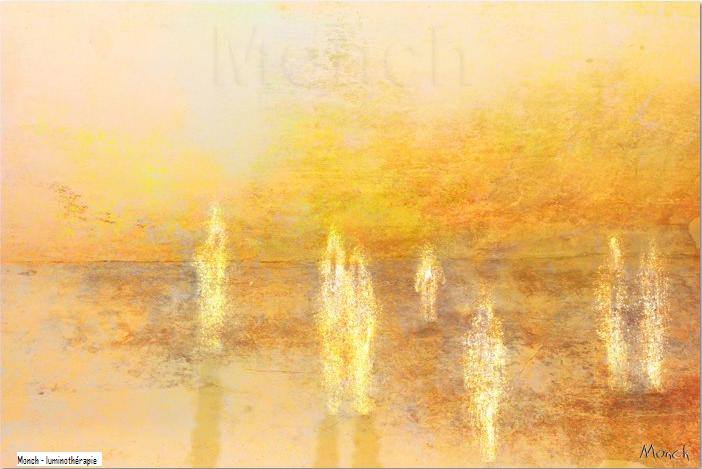The Orcolat: Pink Floyd, the Ogre, and the Real Voice of the Quake

The earthquake in Northern Italy happened on May 6, 1976, at exactly 9 PM. Later major aftershocks occurred on the 11th and 15th of September.
I was there and will always remember.
Not at the epicenter, but certainly well within the range where the earthquake was felt. But first a little history on the quake.
To date, it ranks as the fifth largest earthquake to shake Italy and measured 6.5 on the Richter Scale. Initially it was believed that the epicenter of the quake was in the area of Monte San Simeone, but later it was pinpointed to an area between Gemona and Artegna, in the midst of a mountain called Monte Chiampon.
The Earthquake of 1976 came to be known as “Orcolat” by the local Friulian people. Orcolat is a word in dialect that combines “orco” (ogre) with a denigrating suffix (“lat” or “laccio”) — in other words, a bad ogre. In local folklore, the Orcolat was the cause of all earthquakes in the mountainous Carnia region of Northeast Italy.
Here is one version of the Orcolat story:
A long time ago there lived a large, hairy man who the locals both disliked and feared. They called him the "Orcolat", which in Friulian is a combination of the word for "ogre" and a negative suffix, i.e. the bad ogre.
He lived in a cave in a nearby mountain a short distance from a local village. Because they disliked him, he also grew to dislike them and so began to torment them in different ways. Sometimes he would jump into the river and cause flooding in the town. Other times he would cough or blow his nose in the direction of the community, causing high winds to blow off the rooftops of the people's homes.
One man in town said that he would solve the problem of the Orcolat. His name was Tite.
Tite asked the villagers to give him a deck of cards and ten large barrels of wine. He then climbed up to the mouth of cave of the Orcolat and challenged him to a game of cards.
The Orcolat was intrigued and said he had never played cards before. Wanting to know what he stood to win, Tite told Orcolat that if he won ten games out of ten, he could have the ten barrels of wine right now and that the town would provide wine to the ogre forever. Initially Orcolat was skeptical, but Tite said he might win due to beginner’s luck. Sure enough, the giant won every card game he played with Tite, and oddly, Tite became happier and happier with each loss.
After many games, Tite declared the Giant as the winner. As agreed, The Orcolat immediately drank the ten barrels of wine which the he consumed in ten gulps. The giant was now happier than ever before and he was looking forward to a lifetime supply of wine. He was also quite drunk, and very sleepy. And so he fell into a deep slumber.
The giant awoke many hours later, not completely sure where he was and why it was so very dark. He then realized that he had been dragged into his cave. Light no longer entered from the opening and he could no longer smell the moss and damp earth nearby. He stumbled through the dark, trying the find the entrance and when he got there all he found was a wall of rocks and boulders, with a flask of wine and the deck of cards left behind by Tite.
He had been fooled. Now, angrier than ever before, he flung himself at the rocks, scratched and pulled at them but to no avail. The rock wall was completely immovable. It was hopeless, he knew.
Saddened, angry and betrayed, the Giant crawled back towards the deepest part of his cave, and there he sat for a very long time.
Eventually he stirred again, feeling his way along the black walls of the cave, seeking some opening, some weak area. There were none.
From time to time, the giant’s anger would rekindle, and he would throw himself against the walls of the cave and beat his fists on the floor.
The giant’s struggles would cause the earth to tremble and the locals would then say “Cuietiti, Orcolat!” (Calm down, Orcolat).
Here is another version of the Orcolat legend, which I much prefer:
Once there lived a giant creature whom everyone believed to be evil because whenever he would stomp or become angry, it would cause the earth to tremble. The giant, whom they called the Orcolat, survived by herding pigs and other animals and lived in a deep cave at the foot of Mount San Simeone.
This mountain was near the town of Bordano (in the northeastern Italian province of Udine) and the area was known as the “Place of Butterflies” or “The House of the Butterfly”. The name originated because in late spring many different species of butterflies would fly there.
One day the Orcolat had been gathering mushrooms and by mistake he ate some that were poisonous. He experienced a terrible stomachache and fall into a deep sleep. While he slept, some outlaws (called brigands in Italian) destroyed the Orcolat’s house, burned the vegetation on the mountain, and the town of Bordano.
Shortly thereafter, the Orcolat awakened and chased the brigands away. The townspeople were grateful for the help the creature had given them so they climbed up the mountain bringing gifts. They found the Orcolat sleeping again, and now surrounded by thousands of butterflies.
The townspeople now had an idea. If they were to paint butterflies on their homes the Orcolat would tiptoe so as not to disturb the lovely creatures, and so would not cause their homes to be destroyed by earthquakes.
And so the earthquakes grew less frequent and less severe, only occasionally happening when the Orcolat lost his temper.
That evening in May, seventy-seven Italian communities were affected to a greater or lesser degree, with a total of 990 dead and 45,000 made homeless.
Aftershocks continued in the area, with moving epicenters, until 1979. The strongest of these occurred on September 15, 1976, at 11:21 in the morning, was centered in Gemona del Friuli and measured 6.0 on the Richter scale.
I vividly remember that one too. It was only slightly weaker than the original quake.
Much highly technical research and investigation has been done over the years to isolate the causes of the quake, but that is a much longer and different story than the one I wish to tell.
Suffice to say that it was frightening.
There are many individual stories from the quake, but one is absolutely extraordinary, especially for the time when there were no cell phones or easy ways to visually or aurally memorialize an event.
In September of 1975 the progressive rock band Pink Floyd released an album entitled Wish You Were Here, and one of the tracks was the much loved song “Shine On You Crazy Diamond”.
Eight months after the release of the album, a local Udine teenager named Mario Garlatti who had just turned 18 (some earlier reports said he was 13 years old and lived in Tricesimo, but that is incorrect) had received a wonderful birthday present — a Philips cassette recorder with a built-in microphone; this would turn out to be a very important detail. Mario was anxious to re-record this new album from vinyl to a cassette tape. His record player was plugged into the outlet, and his cassette recorder was working on its battery power.
The family was finishing up dinner just around 9PM, the usual time in Italy back then. His parents were there, sitting around the dining table, along with his sister Anna (21 years old), her husband Gianpiero and their two children named Francesca (age 2) and Carlo (age 1).
The evening was so warm and pleasant that the windows were all wide open and Mario recalled that dogs had been barking incessantly. Mario’s mother and sister were laughing and making funny sounds at one of the babies. His father and brother-in-law were seated comfortably, loudly commenting about the soccer game.
Little did Mario know that he was about to record one of the most important tracks in the history of seismology. He was about to unwittingly memorialize the sound of the Orcolat.
In an interview (loosely translated and abridged) conducted some 38 years later Mario recalled:
“Right after dinner I was intent on transferring a Pink Floyd album from vinyl to cassette. I was doing a professional recording, having connected my Philips recorder directly into the record player by means of an audio jack. I loved Pink Floyd and wanted to create a recording with the best fidelity. Just a few seconds prior to 9 PM I felt a bump that made an object on my wall swing. I ran to the kitchen to ask my mother if she had noticed anything. I hadn’t yet reached her when the disaster struck. It was a large and lengthy quake; it made the floors and the walls move – they seemed to speak. It was a sinister sound that I will never forget. The house seemed to be screaming.”
The main earthquake struck at 12 seconds past nine o’clock and the electricity was lost immediately. Everything was dark. But, since the cassette player was battery operated, it continued to function in recording mode. However that is not all.
The force of the quake actually disconnected the jack, activating the external microphone and enabling the recording of the sound of the earthquake. What happened was that the record player stopped because of the loss of electricity, and the sound now being recorded were that of the player’s needle skidding across the album followed by the rest of the ambient noise. There was a distinct and unforgettable rumble.
Mario said it was utterly frightening.
I know exactly what he meant.
Here is the fateful recording (only a part of it). You don’t need to understand Italian or Friulian dialect to experience it.
Mario Garlatti's recording of the voice of The Orcolat.
I will return to Mario’s incredible story, but for a moment I will relate my personal experience.
As already mentioned, the evening was glorious. Warm, with a light breeze. The perfect evening for a leisurely stroll and a stop at the local bar for an after-dinner drink.
At the time my parents and I were living in Treviso, in the Veneto province, just adjacent to Friuli, on the top floor of a five-story building in the centre of the city. My mother was tired and preferred to stay indoors, so my father and I went out into the night.
We walked around for a short time and then ended up at a local bar-café that had a lovely balcony overlooking the falls of the Sile River. We had ordered some after dinner liqueur and were seated on the balcony, talking of inconsequential matters. The balcony floor was made of roughly surfaced flagstones. My chair was unevenly placed, with one of the four legs not quite touching the floor.
Just prior to 9 PM, just as Mario noted, something happened. I felt the fourth leg of the chair meet with the floor and the other three legs move up. It was a slight movement and I initially thought that some heavy vehicle had gone over the bridge at the falls, causing a strong vibration.
I looked around, saw nothing out of place, and asked my father if he felt something. No, he had not.
Then it hit. I cannot describe the feeling, just as Mario says — only those who have experienced it can understand. There was a distinct and unforgettable rumble. The world seemed to vibrate and roll, with one noticeable large tilt. The lights went out.
It had been such a pretty evening, and the balcony was filled with young couples romantically chatting together. As soon as the quake hit, it seemed that all the men (including my father) ran for the exits and all the women remained sitting stunned at the tables. Then, almost as one, the men seemed to realize they had abandoned their partners, and returned from the street, back through the building to the balcony.
In the meantime, I had been watching the overhead lights swaying violently (streetlights were hung across overhead cables and not on light poles as is typical elsewhere). I grabbed my purse, fished out some money and put some cash in the hand of a stunned waiter who was also staring at the lights pirouetting overhead.
My father and I then remembered my mother at home alone on the fifth floor. We ran along the river to the apartment, passing an astonishing number of rats on the street that had emerged from the river and likely the sewers too. We expected to have to climb the stairs to the building and so find my mother huddled somewhere inside. But no; we found her clad in an elegant bathrobe, clutching her purse, and consoling the female neighbours.
Other than a few light cracks in the walls and ceilings,fine dust everywhere and the pictures on the walls now hanging askew, all was fine. No power, of course, but we did have battery run radios and gradually, over the course of the night, confusing reports emerged. It was not until sometime the next day that we began to learn what had happened, where the epicenter was, and how the death counts began to climb.
Meanwhile, sometime in the night, despite several aftershocks that sent us running down the stairs to the streets, we decided to go to bed. I went to open the medicine cabinet in the bathroom for toothpaste and everything fell out, since the contents had shifted during the quake. Big clatter, me screaming, my parents running to see what had happened. A small matter in the greater scheme of things, but it illustrates the level of panic lurking just beneath the surface of our minds.
What does a big earthquake feel like?
Everyone knows the feeling you get in your belly when they are given unexpected bad news — your tumour is malignant, there was an accident, your loved one’s illness is inoperable — or when you are caught red-handed doing something you know is wrong.
Imagine that feeling suffusing your entire body and combine that with an utter loss of control. That is what it feels like.
For months I lived in constant fear of aftershocks. The most disconcerting ones would happen at night. I had packed a small backpack containing things I wanted to save. I don’t remember now all the items, but it did contain some photographs, letters, a little family jewelry (one gold ring that was later stolen in a break-in) and, of course, a few books. I carried that bag down the stairs so many times in the night when an aftershock would rock the building.
Returning to Mario’s story (again, loosely translated and abridged):
"That evening a family friend loaned us a pup-tent and we went to sleep near Bearzi. My parents decided to sleep in the car. After two days we asked the local authorities for permission to re-enter our home and gather Whenever I hear Pink Floyd music, I am reminded of the earthquake; I cannot not think of it. That particular song, for me, feels almost as though I composed it, as it became such an integral part of my life. I have since attended many Pink Floyd concerts, even the one held in Udine in 1994. Incredibly, in every concert I attended, the first music played is that of “Shine on You Crazy Diamond”.
Mario went on to say that "Whenever I hear Pink Floyd music, I am reminded of the earthquake; I cannot not think of it. That particular song, for me, feels almost as though I composed it, as it became such an integral part of my life. I have since attended many Pink Floyd concerts, even the one held in Udine in 1994. Incredibly, in every concert I attended, the first music played is that of “Shine on You Crazy Diamond”",
At the time of the interview (2014), Mario was teaching information technology in Udine. He does not enjoy discussing the Orcolat experience with his students, even when earthquake evacuation drills happen. He commented that “I try to explain the importance of sheltering under their desks — but then they laugh”.
Would you like to read other posts? If so, please click the Home Page link below:

You, Dear Reader, are much needed and appreciated.
Everything written requires a reader to make it whole. The writer begins, then you, dear reader, take in the idea and its image, and so become the continuation of its breath. Please subscribe so that my words can breathe. Consider this my hand, reaching out to yours.
